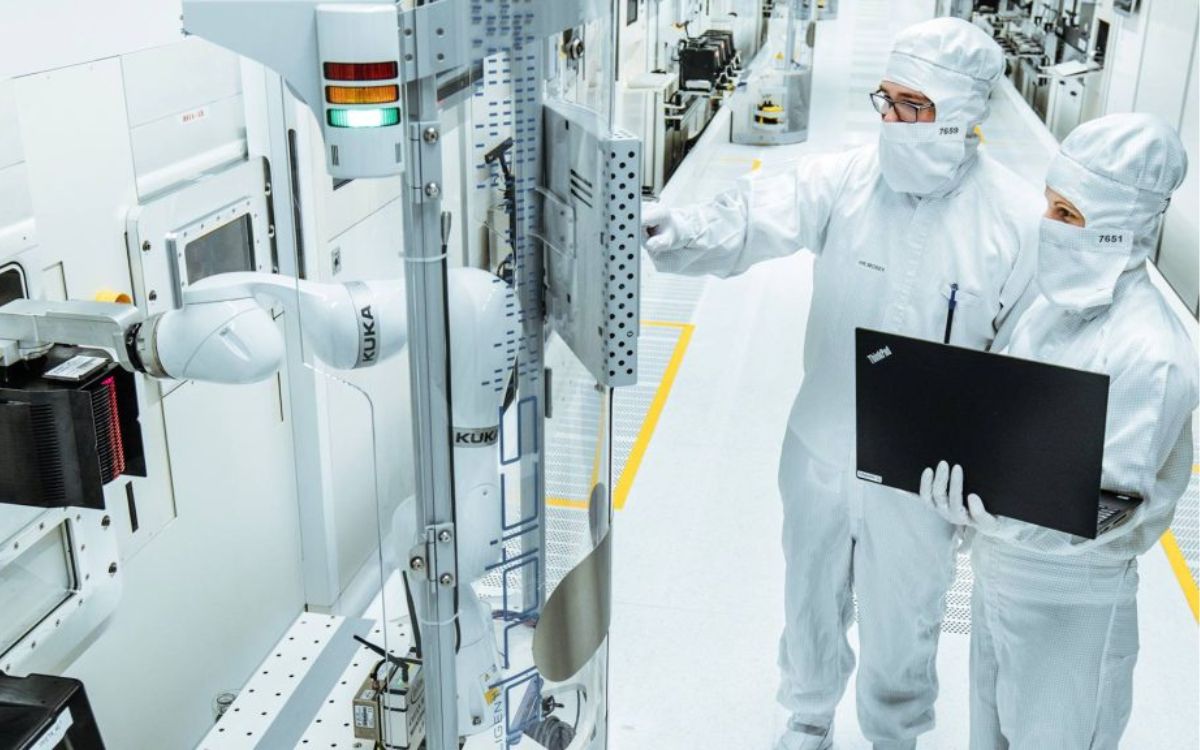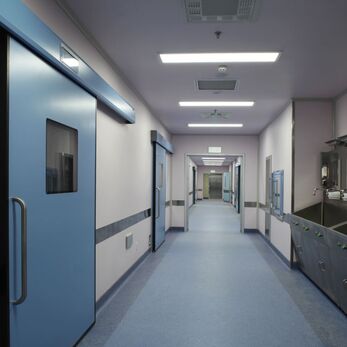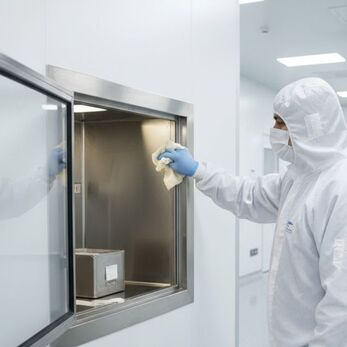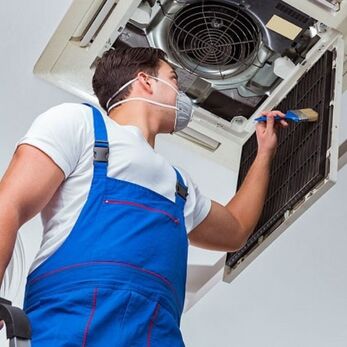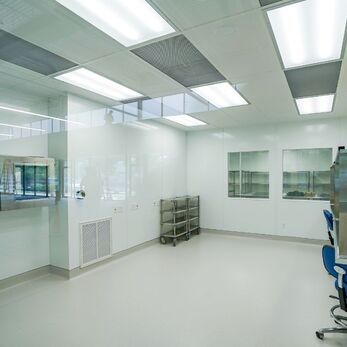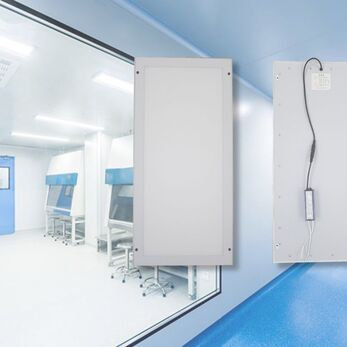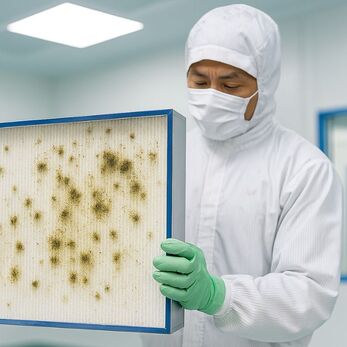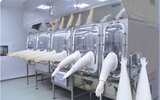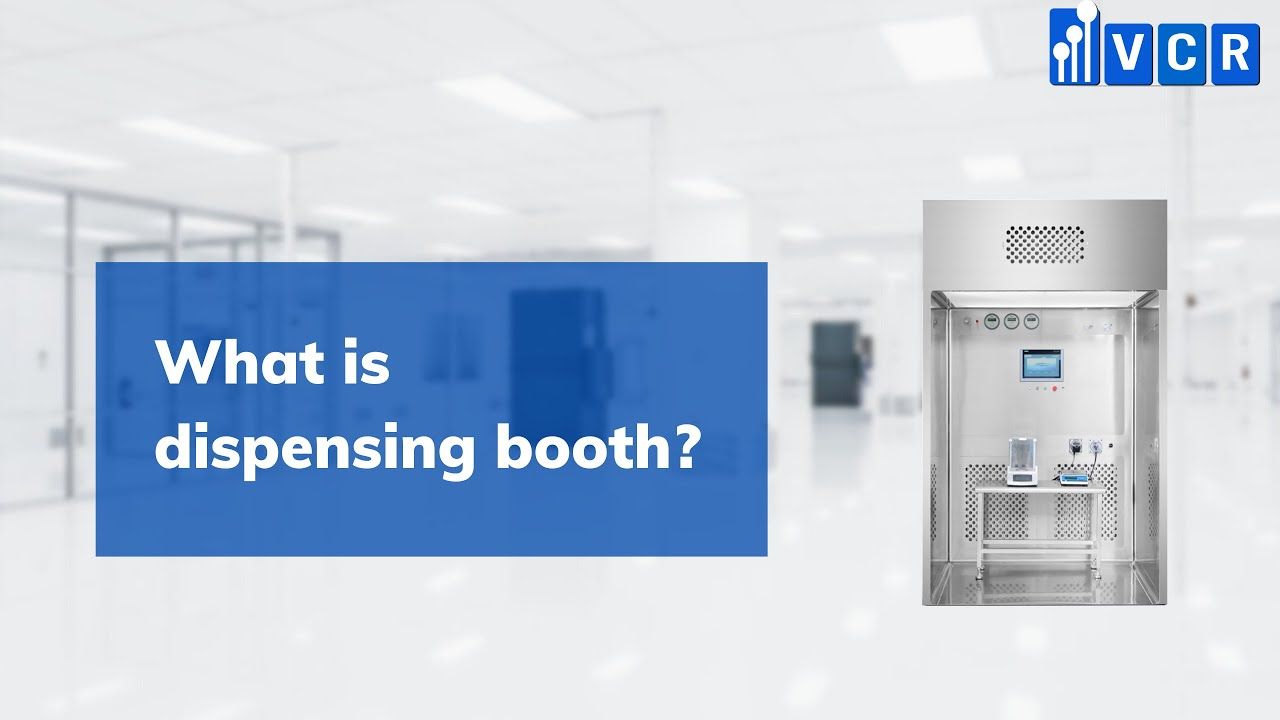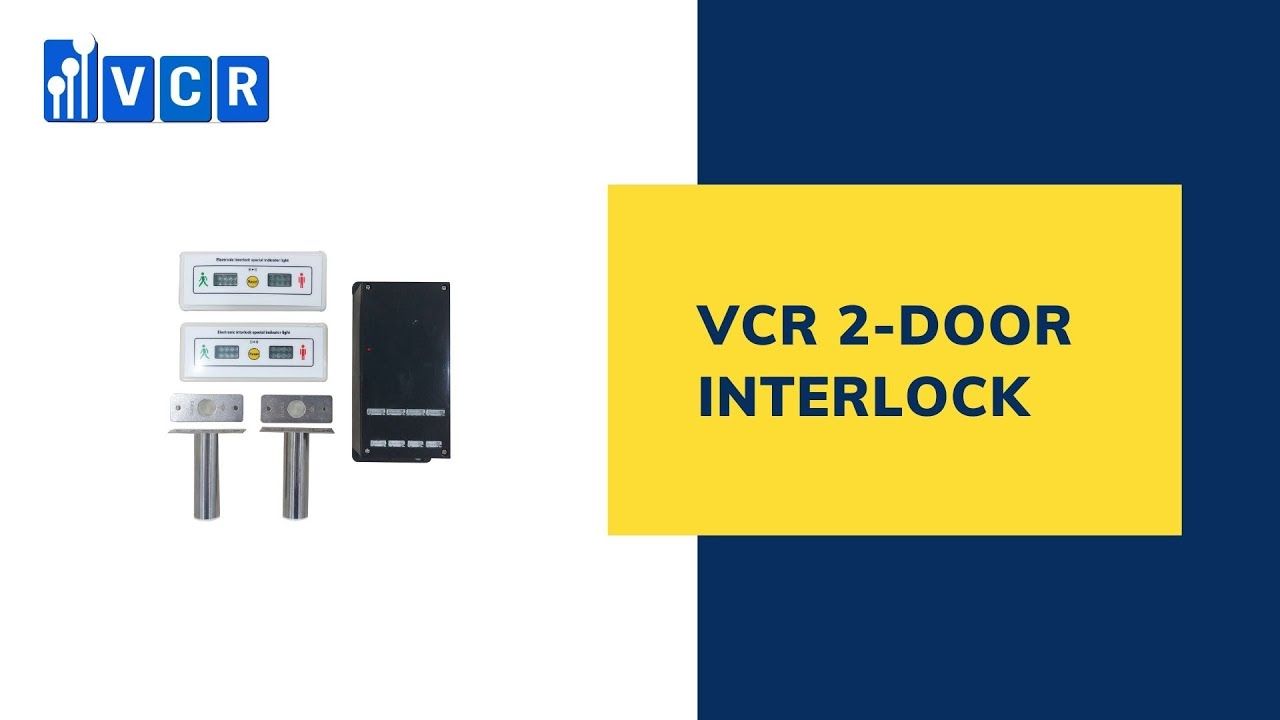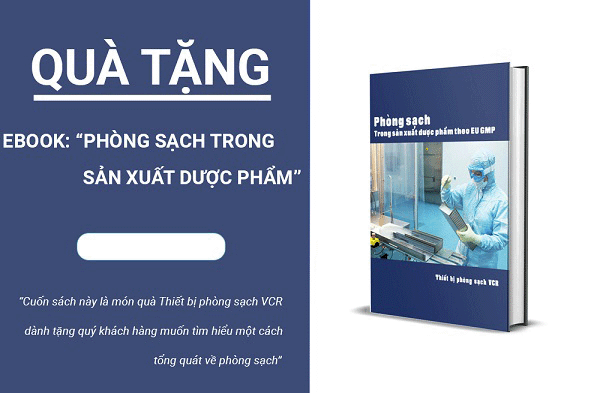Clean Factory Design Trends 2026: AI, IoT, Sensors
From 2024–2026, the trend of clean factory design will change dramatically thanks to AI, IoT and smart sensor systems. These technologies help factories operate automatically, monitor the environment in real time and meet GMP – ISO 14644 standards in the context of transitioning to a smart factory model.
- 1. Overview of Technology Trends in Cleanroom Facilities
- 2. Applications of AI in Cleanroom Design and Operation
- 3. IoT - The Backbone of Smart Cleanroom Facilities
- 4. Next‑Generation Sensors: Detection - Alert - Instant Response
- 5. Benefits of Integrating AI - IoT - Sensors in New Plant Designs
- 6. Trends for 2026 & Implementation Recommendations for New Plants
- 7. Frequently Asked Questions
- 8. Act today to stay ahead of the 2026 clean factory trend
1. Overview of Technology Trends in Cleanroom Facilities
The Cleanroom Industry Revolution from 2024 to 2026
Between 2024 and 2026, Clean factory design trends are changing dramatically thanks to AI, IoT and smart sensor systems. Moving beyond manually operated and isolated systems, modern cleanroom facilities are being redefined as automated - intelligent - real-time data-driven environments.
This is not merely a technology trend but a strategic shift to meet increasingly stringent requirements from standards like GMP, ISO 14644, ISO 22716, and the growing preference for paperless compliance in quality management.
Why AI - IoT - Sensors Are Becoming the “Brain” of Smart Cleanrooms
In the cleanroom ecosystem, AI, IoT, and sensors function like an interconnected nervous system:
- AI is not just a data analytics tool; it enables automated decision-making, from incident alerts to real-time HVAC optimization.
- IoT connects every piece of equipment - from Pass Boxes and Air Showers to pressure systems and interlock doors - forming a centralized monitoring network.
- Sensors act as the system’s “sensory organs,” feeding accurate data on temperature, humidity, particulates, microorganisms, pressure differentials, light, and static electricity.
Together, these technologies create a Cleanroom Intelligence Platform that ensures facilities not only operate according to standards but also proactively prevent errors, save energy, and respond quickly to change.
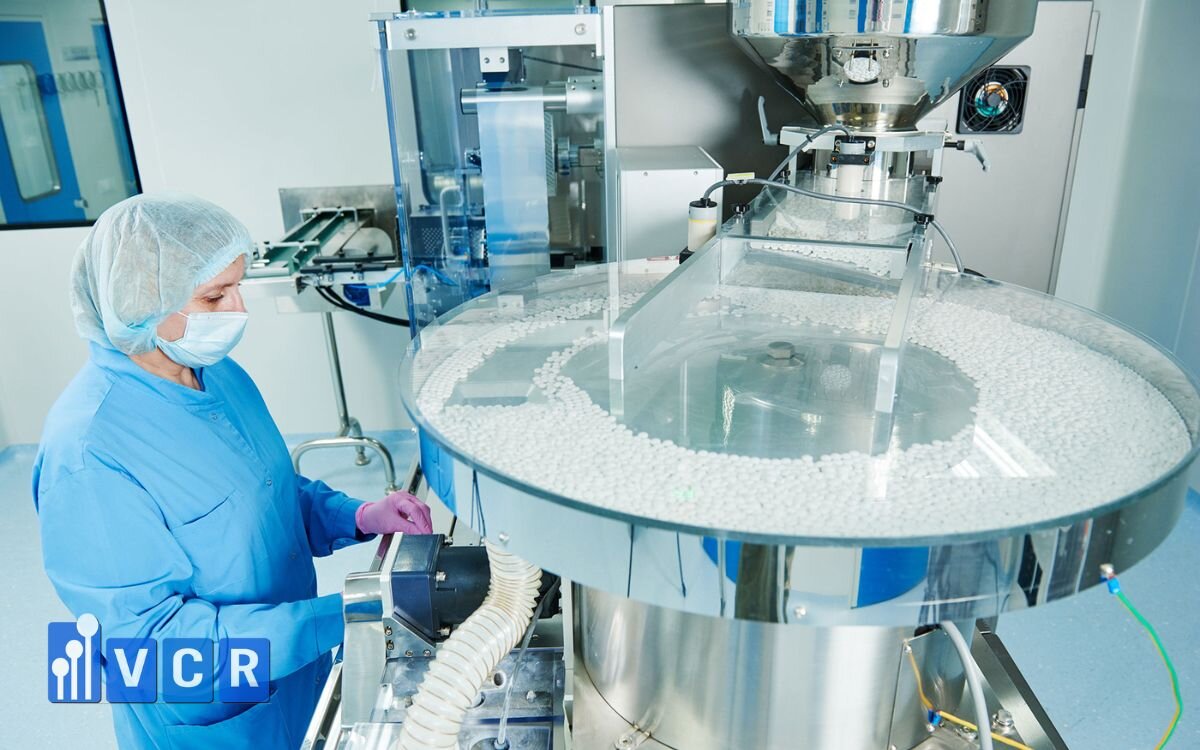
Impact on Key Industries: Pharmaceuticals - Food - Electronics - Cosmetics
- Pharmaceuticals
The increasing scrutiny from EU-GMP and PIC/S requires smart Environmental Monitoring Systems (EMS) capable of auto-logging, real-time alerts, and full data traceability for audits. - Food
Odor, temperature, and cross-pressure sensors are used to prevent cross-contamination and enhance traceability, especially for fermented or perishable products. - Electronics
In SMT and semiconductor factories, ESD sensors, precise pressure control, and dynamic FFU operation protect sensitive components in ISO 5-ISO 7 clean zones. - Cosmetics
ISO 22716 and the “clean from within” trend demand stringent monitoring during filling and packaging. Sensors and IoT help control environmental conditions in airlocks, gowning rooms, and staging zones.
Starting from 2024, the integration of AI, IoT, and sensors into cleanroom design and operation is no longer optional - it is a strategic necessity for maintaining compliance, competitiveness, and readiness for the smart factory era.
2. Applications of AI in Cleanroom Design and Operation
Optimizing Cleanroom Layouts with AI (BIM + AI Design Assistant)
AI is revolutionizing the design phase by integrating with BIM (Building Information Modeling) software. AI design assistants can:
- Automatically suggest optimal layouts based on personnel, material, and clean airflow paths
- Simulate contamination risks and reverse airflow, then propose layout adjustments
- Quickly evaluate constructability and suggest materials compliant with ISO/GMP standards
Instead of repeated manual revisions, AI helps reduce design time by 30-40% while ensuring accuracy and compliance from the start.
AI-Powered Operational Analysis: Pressure and Airflow Monitoring
In cleanroom operations, AI acts as a digital operations assistant, continuously collecting and analyzing data from:
- Pressure sensors in airlocks, gowning rooms, and weighing areas
- Airflow sensors in FFUs or AHU systems
- Integrated BMS/SCADA systems
Using real-time data, AI can:
- Issue early warnings on pressure imbalance across zones
- Analyze trends to optimize airflow and reduce power consumption
- Recommend predictive maintenance based on usage patterns
This marks the shift from reactive troubleshooting to proactive risk prevention.
AI for Real-Time GMP/ISO Compliance Monitoring
One of AI’s most disruptive applications is its ability to support real-time compliance monitoring:
- AI constantly compares environmental data with limits defined by ISO 14644, EU-GMP, or ISO 22716
- Automatically logs all deviations - creating an audit-ready digital trail
- Sends alerts when any parameter exceeds or approaches risk thresholds
During audits, AI can:
- Generate automated compliance reports from EMS and data systems
- Support root cause analysis by tracing environmental conditions for each production batch
This reduces the QA/QC burden while increasing audit readiness and transparency, especially with European and US partners.
AI is no longer a “nice-to-have” - it is becoming an indispensable technical assistant, ensuring precision, efficiency, and real-time compliance in smart cleanroom operations.
3. IoT - The Backbone of Smart Cleanroom Facilities
Establishing a Smart Device Network: Air Shower, Pass Box, Interlock…
In a smart cleanroom model, IoT functions as the connective layer that enables all devices to communicate. Previously standalone systems such as:
- Air Showers - for decontaminating personnel before entry
- Pass Boxes - for transferring materials between clean zones
- Door Interlock Systems - for maintaining pressure differentials
are now embedded with sensors and network modules (LAN/Wi-Fi/LoRa), forming an interconnected smart device network.
Once connected, these devices not only perform mechanical functions but also:
- Transmit data, respond to incidents, and interact with other systems via predefined logic
Examples: - Interlock doors log events and trigger alarms if opened simultaneously
- Pass Boxes lock themselves if the process deviates from protocol
- Air Showers adjust operation time based on actual personnel flow

IoT Sensors for Continuous Monitoring: Temperature, Humidity, Particles, Microorganisms
Unlike traditional stand-alone sensors, IoT-integrated sensors can:
- Stream real-time data to central monitoring platforms
- Operate wirelessly, eliminating complex cabling
- Auto-calibrate and notify users of calibration drift
Commonly monitored parameters include:
|
Sensor Type |
Application |
|
Temperature & Humidity |
Monitoring weighing rooms, production zones, airlocks |
|
Particle Counter |
Measuring ISO 14644 particle concentration |
|
Airborne Microorganism Sensor |
Monitoring high-risk zones in pharmaceutical facilities |
|
Differential Pressure Sensor |
Controlling pressure between clean zones |
|
ESD (Static Electricity) Sensor |
Protecting sensitive electronics in SMT lines |
Integrated Operational Data for Analysis - Alerts - Optimization
IoT is more than data collection - it is the foundation for intelligent action. When sensor and equipment data is fed into a centralized platform (BMS/EMS/SCADA), the system can:
- Analyze operational trends (e.g., is differential pressure stable?)
- Detect anomalies early (e.g., abnormal humidity in packaging areas)
- Recommend equipment adjustments to save energy or extend component lifespan
Additionally, compliance reports (for GMP or ISO audits) can be auto-generated from IoT systems - reducing the manual workload for QA/QC and increasing data accuracy and traceability.
IoT forms the digital infrastructure of cleanroom 4.0 - enabling seamless operation, early risk prevention, and scalable audit readiness.
4. Next‑Generation Sensors: Detection - Alert - Instant Response
High‑Precision Clean‑Air, Pressure and Differential Pressure Sensors
In a cleanroom environment - where a deviation of just a few Pascals can cause contamination - sensor accuracy is a matter of life or death. The new generation of sensors, designed specifically for GMP/ISO industries, feature:
- High resolution: capable of measuring differential pressure with an error margin under ±0.25 Pa
- Auto‑calibration: ensuring long‑term stability
- Electromagnetic interference mitigation: reliable operation even in high humidity, dust‑laden or high static environments
These sensors integrate into:
- Digital differential‑pressure gauges with LCD screens and network connectivity
- Interlock controllers - automatically locking/unlocking doors when pressure fails to meet requirements
- Smart FFUs/AHUs - dynamically adjusting airflow based on real‑time differential pressure readings
The result is a stable airflow system that prevents deviation early, rather than detecting issues after they have occurred.
Non‑Invasive Microbial Sensors in Pharmaceutical Environments
A breakthrough in clean‑pharmaceutical monitoring is the development of real‑time, non‑invasive microbial sensors that eliminate the need for physical sampling or wait time for culture results. These sensors operate by:
- Analyzing air via rapid biological reactions or spectrometry
- Comparing results to predetermined GMP thresholds (e.g., < 1 CFU/m³ for ISO 5)
- Instantly alerting when thresholds are exceeded, without waiting for lab reports
Key advantages of this technology:
- No interruption of production processes
- Reduced sampling errors associated with manual procedures
- Supports microbial traceability by production batch - aiding rapid, transparent audits
This technology is increasingly applied in high‑risk zones such as weighing rooms, sterile filling and packaging in the pharmaceutical, biotech and vaccine sectors.
Interaction with AI to Create Automated Response Systems
The most significant distinction of next‑generation sensors is their ability to interact with AI to not only detect but also decide and act instantly.
Examples of automated response systems:
If the pressure difference between an airlock and production room drops suddenly, the differential‑pressure sensor detects the change → AI evaluates → the system automatically:
-
- Triggers visual/audio alerts
- Locks interlock doors to prevent backflow
- Activates FFUs to increase compensating airflow
If microbial particulates exceed thresholds in a packaging zone, the AI will:
-
- Pause the filling process
- Log the event
- Notify QA personnel via the system
This system operates 24/7 without manual intervention, reducing error risk and enhancing overall operational safety of the facility.
5. Benefits of Integrating AI - IoT - Sensors in New Plant Designs
Enhancing Accuracy and Contamination Control
In environments requiring rigorous control such as cleanrooms, accuracy isn’t just an advantage - it’s a requirement. By integrating AI, IoT and sensors from the design phase, a facility can achieve:
- Continuous measurement and monitoring of key parameters: differential pressure, particulates, humidity, microorganisms …
- Maintenance of stable environmental conditions 24/7 with minimal manual intervention
- Early alerts of anomalies, enabling corrective action before contamination occurs
Contamination control transitions from being a reactive activity to a proactive process, aligned with the latest GMP standards.
Minimizing Human Error Risk
Many cleanroom incidents derive from operator mistakes, forgetting to close doors, or improper procedures. With automated systems driven by AI and IoT:
- The process logic is embedded and overseen by AI
- Sensors detect incorrect operations and immediately intervene (e.g., two interlock doors opened simultaneously)
- The system logs every device action - enabling clear root‑cause traceability
As a result, the facility runs correctly and consistently without relying on individual operator experience, reducing audit risk and enhancing credibility with international clients.

Operating Cost Savings through Real‑Time Optimization
One of the greatest values of a smart cleanroom model is the ability to optimize operations based on real‑world data, rather than assumptions or maximal capacity. Real‑world examples include:
- AI analyzing high‑traffic periods to adjust Air Shower or filtration system runtime
- The system automatically reducing load during nighttime to save energy while maintaining environmental conditions
- Predicting when equipment needs maintenance - reducing unplanned downtime
According to case studies, the implementation of intelligent systems can reduce energy costs by 15‑30% and maintenance costs by 20‑40% per year - particularly in large, high‑standard plants such as EU‑GMP or ISO 14644 Levels 5-6.
Integrating AI, IoT and sensors from the design phase not only improves operational efficiency, but also lays the foundation for international‑standard compliance, long‑term cost reduction, and enhanced competitive capability. This is a sustainable ROI in building modern cleanrooms.
6. Trends for 2026 & Implementation Recommendations for New Plants
Anticipated Standard Revisions: ISO 14644:202X? Updated GMP?
Entering 2026, international cleanroom standards are trending toward:
- Increased digitalization and automated monitoring → GMP now recommends real‑time Environmental Monitoring Systems (EMS), replacing traditional manual sampling.
- Emphasis on full data integrity and traceability → The FDA and EU‑GMP increasingly value automatic logging, audit trails and sensor‑based data analysis - domains where AI + IoT outperform manual methods.
- Adoption of non‑invasive microbial sensor technology → Organizations like ISO/TC 209 are discussing technical guidelines for non‑contact biocontamination monitoring.
This means: a cleanroom that meets current standards may not suffice tomorrow, without a flexible technology platform that can keep pace with change.
VCR’s Proposal: Integrated Next‑Gen Cleanrooms from Day One
To help companies stay ahead and avoid costly retrofits, VCR proposes the “Cleanroom 2026‑Ready” model with key elements:
1. Design cleanrooms with AI + IoT integration from the blueprint
- Plan signal cabling and internal networks (LAN/Wi‑Fi/LoRa) for sensors and smart devices
- Use BIM with AI to optimize layout, airflow and pressure zones
2. Select smart‑device‑compatible equipment
- Pass Boxes, Air Showers, Interlocks, FFUs … with built‑in sensors and EMS communications
- Differential pressure, humidity/temperature and microbial sensors with cloud or central‑control connectivity
3. Deploy a central monitoring and analytics platform
- EMS/BMS with visual interface, AI‑connected for real‑time data analysis
- Supports automatic report generation for GMP/ISO audits
4. Link tightly with industry standards and requirements
- VCR supports clients from standards consulting (GMP, ISO 14644, ISO 22716 …)
- Assists in integrating operating procedures and internal training under a “digital‑factory” model
The industrial cleanroom design trend for 2026 is not simply “adding sensors” - it is redefining the entire cleanroom concept: proactive - data‑driven - self‑optimizing. Companies that integrate technology from the start will not only comply with international standards but also build lasting competitive advantage in an era where traceability and AI govern every production and audit process.
7. Frequently Asked Questions
1. Can AI in cleanrooms replace human operators?
No. AI does not completely replace human operators in cleanroom operations, but plays a crucial supporting role. Specifically, AI helps:
- Rapid and accurate analysis of sensor data
- Early detection of anomalies like pressure deviations or unexpected door openings
- Automatic generation of compliance reports, reducing the workload of QA/QC staff
AI acts as a digital technical assistant helping humans make faster and more accurate decisions - rather than replacing engineers, managers or operators.
2. Is IoT mandatory in a GMP cleanroom design?
Legally, IoT is not yet mandatory under GMP. However:
- Standards like EU‑GMP, FDA 21 CFR Part 11, Annex 1 strongly encourage real‑time monitoring systems
- In recent audits, cleanrooms with IoT integration are often rated higher due to their ability to provide full‑traceability and continuous data
Therefore, new GMP‑compliant cleanroom designs should integrate an IoT platform from the beginning to anticipate standard requirements and improve future competitiveness.
3. Which sensors are essential for an ISO 7 cleanroom?
Depending on production process and industry, the essential sensors for an ISO 7 cleanroom include:
- Differential pressure sensors: controlling pressure between rooms - especially at airlocks and gowning rooms
- Temperature & humidity sensors: ensuring environmental conditions conform to production requirements
- Particle‑ and microorganism‑count sensors: monitoring particle concentration and microbial risk - critical for pharmaceutical, cosmetic and food industries
Recommendation: Select sensors with IoT connectivity to support real‑time analysis, automatic reporting and early‑warning when thresholds are approached.
8. Act today to stay ahead of the 2026 clean factory trend
If you are planning to build or upgrade a GMP/ISO‑compliant cleanroom facility and want to integrate AI, IoT and sensors from the design phase to reduce long‑term costs - and you need a partner who understands both equipment and industry standards from the outset - VCR is your end‑to‑end cleanroom solution specialist:
- Cleanroom design consultancy tailored to your industry
- Supply of internationally certified equipment, integrated with sensors and IoT modules
- Deployment of EMS/BMS systems connected to AI, audit‑ready for GMP/ISO
- Comprehensive training, commissioning and maintenance services for your technical team
Contact our VCR expert team today to get the right solution for your cleanroom facility in the era of Cleanroom 4.0.
Hotline: 090.123.9008
Email: [email protected]
Website: https://vietnamcleanroom.com/
Diep VCR






